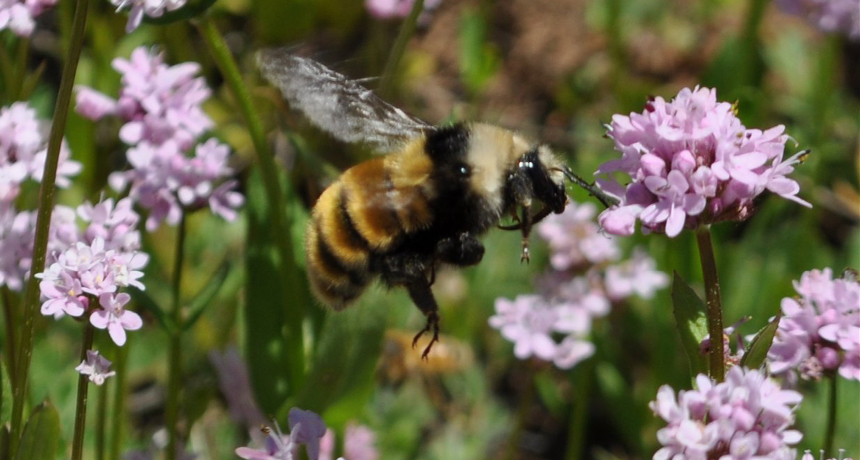A quick picture can help local bumblebees

By photographing local bumblebees, you can help scientists conserve these valuable pollinators.
Rich Hatfield
Your neighborhood bumblebee is in trouble. Now, a new website aims to get citizen scientists involved in the effort to help these fuzzy pollinators out.
Since the 1990s, scientists have recorded decreasing bumblebee populations in many areas of North America. These insects play important roles in the ecosystem. Bumblebees pollinate many of the fruit and vegetable plants we eat and flowers we love.
Scientists are still trying to figure out why bumblebee populations are suffering. But it’s a hard thing to study. To understand what’s happening, scientists need a lot of information. They would like to know which bees live where and how many there are.
The Xerces Society is a group devoted to conserving bees as well as other types of insects and critters. With help from wildlife preservation societies and universities in the United States and Canada, the Xerces Society started bumblebeewatch.org. The website needs volunteers to help track bumblebees.
Richard Hatfield, a conservation biologist who works with the Xerces Society, says that citizen science is the best way to study bumblebees. “Instead of having a single researcher or a small team trying to find these bees,” he explains, “it is more efficient to have thousands of people on the ground with cameras who can upload and share what they find.”
The next time you see a bumblebee, whip out your camera and take a picture. Go to the Bumble Bee Watch website, create an account and upload your photo. You can then click on a map to show where you saw the insect. The website will ask you a series of questions to help you identify the species of bumblebee you saw. Once you are finished, a group of experts will look at your photo to confirm your bee sighting. With information from citizen scientists like you, the Xerces Society can let local groups know what rare bee species might be in their area.
If you’d like to spot bumblebees, check out the website for tips on photographing bees, questions about bees and useful information about these useful creatures. You can also see a video about the Bumble Bee Watch project. Bumble Bee Watch is eager to partner with school groups and scientists of all ages who want to keep bees buzzing.
Power Words
bumblebee A member of the bee genus Bombus. Bumblebees are usually patterned in black and yellow. They are social animals that live in colonies. One queen lays eggs, and other bees collect food and protect the hive. Bumblebees feed primarily on nectar and pollen, and serve as important pollinator for plant reproduction.
conservation The act of preserving or protecting the natural environment.
ecosystem A group of interacting living organisms — including microorganisms, plants and animals — and their physical environment within a particular climate. Examples include tropical reefs, rainforests, alpine meadows and polar tundra.
pollinate To transport male reproductive cells — pollen — to female parts of a flower. This allows fertilization, the first step in plant reproduction.
pollinator Any species of animal that transfers pollen from a male to the female parts of a flower.
species A group of similar organisms capable of producing offspring that can survive and reproduce.